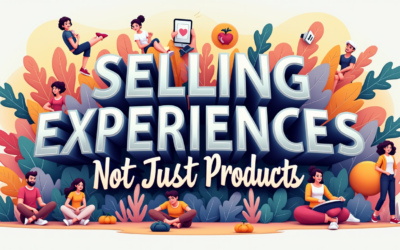How Indian Entrepreneurs Can Use Data to Choose Winning Products for 2025
The world of e-commerce is constantly evolving, and for Indian entrepreneurs, 2025 presents new challenges and opportunities. One of the biggest challenges is identifying which products are likely to succeed in a competitive market. With a growing online retail ecosystem, choosing the right products can make or break your business.
Fortunately, data-driven decision-making can be a game-changer. By leveraging data, Indian entrepreneurs can make smarter decisions, minimize risks, and maximize their chances of success. In this blog, we’ll explore how you can use data to choose the winning products for 2025 and beyond.
Why Data Matters for Product Selection
In the past, product selection was often based on intuition, trends, or personal preferences. While these factors still play a role, today’s data analytics provides entrepreneurs with a wealth of insights that can lead to more informed and successful product decisions. Here’s why data-driven decisions are crucial for product selection:
- Minimizing Risk: Rather than guessing what might sell well, data allows you to analyze market trends, consumer preferences, and competitor performance. This can help you avoid choosing products that are likely to flop.
- Better Market Fit: By examining data, you can identify gaps in the market and find products that align with current consumer demand. This ensures that your products are more likely to resonate with your target audience.
- Competitive Advantage: E-commerce analytics can give you insights into what competitors are doing, how they’re pricing products, and what’s trending in the market. With this information, you can stay ahead of the competition and spot untapped opportunities.

How to Use Data for Product Selection
There are many ways to harness data when selecting products. Here’s a step-by-step guide for Indian entrepreneurs on how to use data to choose winning products for 2025:
1. Leverage Market Research Tools
Start by using market research tools that analyze customer behavior and trends. These tools help you understand which products are in demand, what consumers are searching for, and which categories are growing. Some useful market research tools include:
- Google Trends: This free tool shows you the search volume for various products and topics over time. It helps you identify rising trends and the potential lifespan of a product.
- SEMrush: A comprehensive tool that lets you see how competitors are performing, what products they are selling, and which keywords are driving traffic to their sites.
- Jungle Scout: For entrepreneurs who want to sell on Amazon, Jungle Scout provides product insights, including sales volume, competition, and reviews.
By using these tools, you can spot emerging trends, understand market saturation, and identify the products with the highest growth potential.
2. Analyze Customer Data
If you already have a customer base or are running an online store, you likely have access to valuable customer data. This data includes purchasing habits, preferences, location, demographics, and more. Here’s how to use this data:
- Customer Segmentation: By segmenting your customers based on their behavior (e.g., frequent buyers, seasonal shoppers, or cart abandoners), you can identify which products are most popular among different groups.
- Purchase Patterns: Analyzing past purchases can give you insight into what products are consistently in demand. For example, if customers regularly buy home décor or eco-friendly products, these may be areas to explore.
- Survey Data: Conduct surveys or polls to directly ask your existing customers about products they are interested in. Use this feedback to tailor your product offerings.

3. Monitor Social Media and Online Forums
Social media is a goldmine for real-time product feedback and trend spotting. Platforms like Instagram, Facebook, and Twitter can give you insights into what products are being discussed, shared, and recommended. Here’s how you can use social media data:
- Hashtags and Mentions: Track hashtags or mentions related to specific products or categories. This can help you understand what products are being talked about and which are gaining popularity.
- Influencer Partnerships: Monitor influencer collaborations to identify which products they are promoting. This can give you a clue as to what’s trending among your target audience.
- Consumer Sentiment: Social listening tools like Brandwatch or Hootsuite can track consumer sentiment and let you see what customers are saying about certain products.
Additionally, online forums like Quora or Reddit provide a space where consumers share their problems, needs, and product recommendations. By joining these communities, you can uncover product ideas that are in high demand.
4. Analyze Competitor Data
Looking at competitors can give you a clear picture of what products are working in the market. Here’s how to gather useful competitor data:
- Competitor Websites: Regularly visit your competitors’ websites to see what products they are promoting and how they are pricing them.
- Online Marketplaces: If your competitors sell on online marketplaces like Amazon or Flipkart, review their product listings, customer reviews, and sales rankings. This will give you an idea of what’s selling well and what consumers are saying about these products.
- Pricing Strategies: Use competitor pricing tools to determine if your products are competitively priced. If you are offering something similar, ensure that your prices are attractive enough to draw in customers.

5. Use Product Validation Tools
Before committing to a product, validate its potential using product validation tools. These tools help you assess the success rate of a product based on data analysis and consumer interest. Popular tools include:
- Google Keyword Planner: This free tool helps you understand how many people are searching for a particular product or keyword. The higher the search volume, the greater the potential for sales.
- Amazon Best Sellers Rank: Checking the Amazon Best Sellers Rank (BSR) is a good way to gauge product popularity. If a product is ranked highly, it’s usually a strong indicator of its demand.
6. Predict Future Trends with Data
Data can also help you predict what products will be popular in the coming year. By analyzing historical data, you can identify patterns and forecast future trends. Tools like Google Analytics and Trendwatching provide insights into shifting consumer interests, helping you stay ahead of the curve and choose products with long-term potential.
Key Data Points to Focus On
When evaluating products, here are the key data points you should focus on:
- Search Volume: How many people are actively searching for the product online? High search volume often indicates strong demand.
- Consumer Demographics: Who is buying the product? Understanding your target audience can help you make better product choices.
- Sales Trends: Are sales increasing or decreasing? Look at past performance to predict future growth.
- Competitor Performance: How are competitors performing with similar products? Use this data to gauge the market demand and competition level.
- Product Reviews: What are customers saying? Positive reviews often signal that the product is high-quality and in demand.
Conclusion
In 2025, data is the most powerful tool Indian entrepreneurs have at their disposal to select winning products. By using data to analyze market trends, understand consumer behavior, and assess competition, you can make more informed decisions and increase your chances of success. Whether you are just starting an online business or looking to expand your product line, data will guide you toward profitable opportunities.
If you want to stay ahead in the ever-evolving Indian e-commerce market, using data-driven insights is crucial for selecting the right products to sell. With the right tools and strategies in place, you can ensure that your products resonate with your target audience and thrive in 2025.














